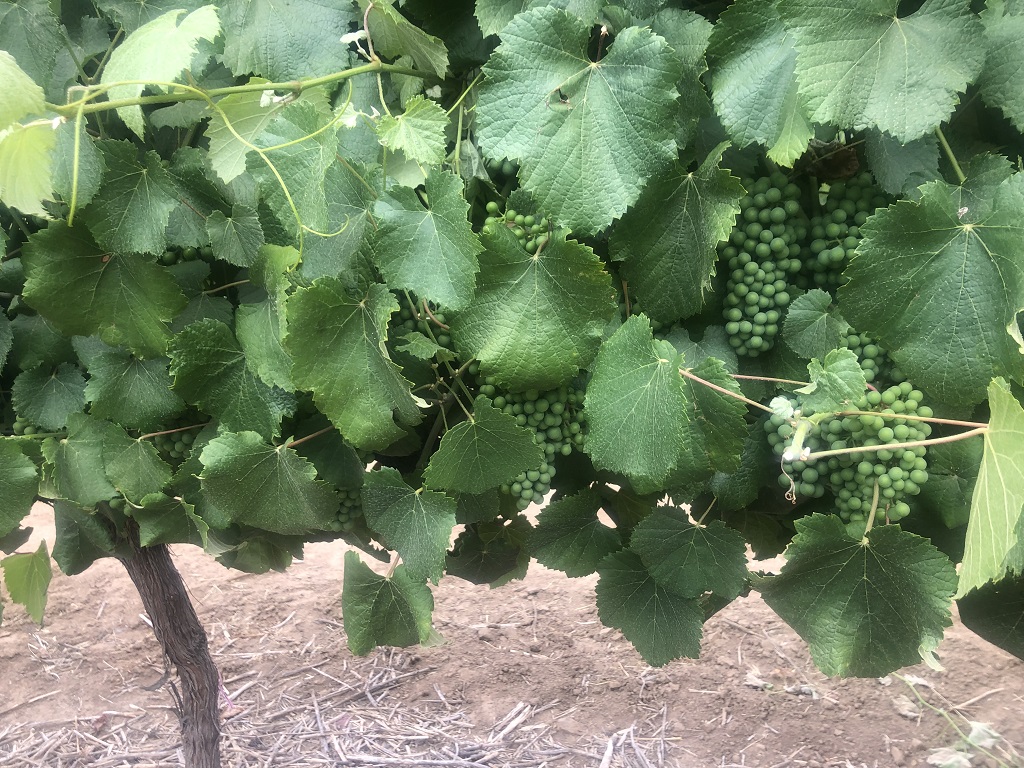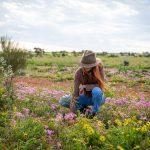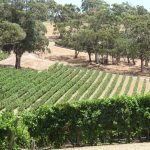Albariño is known as part of a legendary blunder in the 1980’s where it was mixed up with fellow white variety, Savignin. However in recent years, producers have gotten their hands on real Albariño and many are excited by the prospects found while making it. Harrison Davies spoke with experts and producers about the variety.
Iberian wine varieties have seen a huge amount of interest from Australian viticulturists in recent years due to Spain and Portugal’s similar climate and environmental conditions to Australia.
Albariño has been a variety of particular interest for several decades as Australian producers look for interesting ways to expand their repertoire.
Albariño is a cooler climate white that was originally cultivated along the northern Atlantic coast of Spain in the region of Galacia.
The grape is quite hardy and responds well to the sea breezes alongside the cool nights and hot summers found in the region.
Vines are most prominently grown in two regions; Rías Baixas in Spain and Vinho Verde in Portugal.
Rías Baixas use Albariño as a principal variety, and it account for roughly 90 per cent of plantings in the region. Until 1988, the region even identified itself as DO Albariño.
Helena Edgerton teaches a Spanish Wine class at the Sydney Wine Academy and said the variety has a storied history in the North-Western corner of the Iberian Peninsula.
“The oldest growing area within the DO, the Val do Salnés sub-region, claims ownership of Albariño,” she said.
“One wine producer here, Do Ferreiro, makes a wine (Cepas Vellas) using fruit from two hundred year old Albariño vines and these vines, with their thick trunks, appear more like trees growing up the pergola upon which they grow.
“Just across the Portuguese border lies the other main appellation of origin for Alvarinho – Vinho Verde DO. Traditionally the wines of Vinho Verde are white blends and Alvarinho is once again often blended with Loureiro, Treixadura and Lado, amongst others, as in Galicia.
“Vinho Verde is divided into sub-regions, like Rías Baixas. The sub-region of Monção e Melgaço specialises in single varietal Alvarinho wines.
“Crisp, refreshing acidity with stone fruit and citrus and a touch of bitterness on the finish, is the hallmark of these wines.”
Albariño is a hardy variety and thrives in the windy and warm conditions characteristic of its homeland.
Albariño is thick-skinned, which naturally equips the
variety to cope with wet conditions and aids resistance
to botrytis. – Helena Edgerton
In Galacia the vines are trained with pergolas allowing for optimal airflow in the moisture rich conditions of the coastal wine regions.
“You may think that growing vines using pergola training or ‘parral’ seems old fashioned but here, in these maritime regions on the Atlantic coast, it is entirely practical,” Edgerton said.
“Galicia experiences high rainfall and humidity and so training vines on a pergola with the fruit growing overhead, allows plenty of air circulation to avoid disease.
“Albariño is thick-skinned, which naturally equips the variety to cope with wet conditions and aids resistance to botrytis.”
Interest in bringing the variety to Australia began in the late 1980’s and the variety had been tested by several producers in the years following.
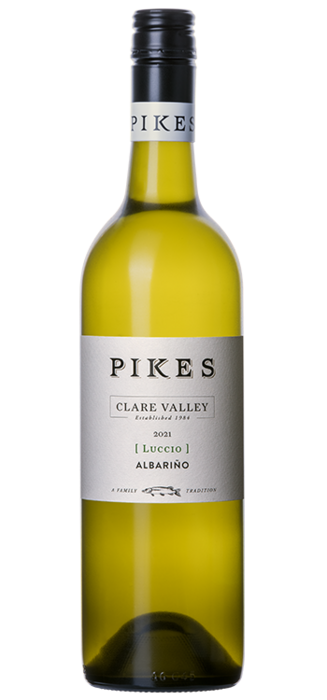
In 2009, the Australian Wine and Brandy Corporation (AWBC) notoriously revealed that the vines producers thought were Albariño were, in fact, Savagnin.
“On the basis of its study the plants labelled as Albariño in the CSIRO’s plant collection are actually Savagnin Blanc (also known as Traminer or Savagnin Rose) and will be re-labelled as such,” the report stated.
“If you have ‘Albariño’ vines that were sourced from the CSIRO collection, then wine produced from those vines cannot be described using that name.”
Actual Albariño
Once producers realised the fumble had been made, many went searching for the real thing.
Albarino has become more prominent in Australia for the last decade and has begun to become an alternative variety of greater prominence.
Clare Valley based viticulturist Andrew Pike, of Pikes Wines, said he had been interested in growing the variety since a trip to Spain in 2009.
“I did a bit of a viticulture tour of Spain, France, Italy, Germany, and spent some time in the Galicia region in the northwest of Spain and was absolutely gobsmacked how good the Albariño was from that part of the world,” he said.
After being part of the Savignin mix up, Pike planted his first actual Albariño vines in 2015 and the first vintage was finally released in 2020.
Pike said he was pleased with how the first few vintages have been and that the variety responds well to the conditions in Clare Valley.
“[We are] really pleased with the way it’s, you know, starting to settle down in the vineyard and the winemakers are starting to get their head around it in terms of stylistically what exactly we’re trying to do with it,” he said.
“And people are starting to realise that this is a variety that actually can then make the transition from what essentially is a very temperate cool damp growing environment in a Galicia region to the more sort of conventional Mediterranean climates that we that we might see here in Australia.
“I would be one of the latest white varieties that we harvest. It comes on sort of made what I would say mid to late harvest.
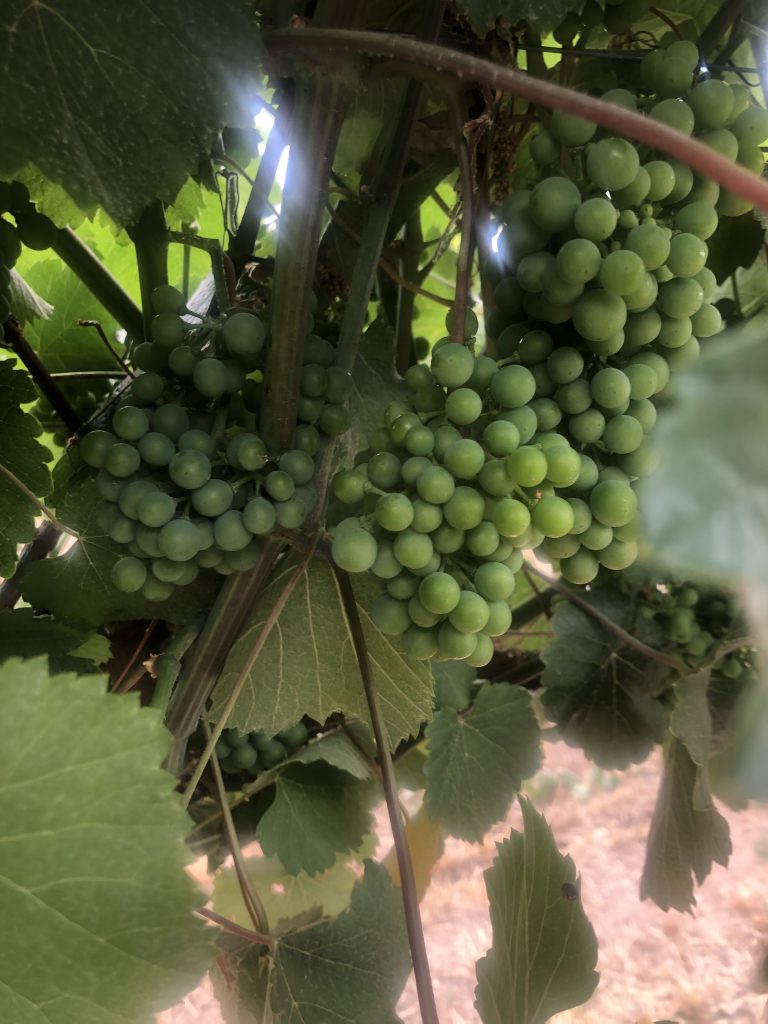
“We’re seeing we’re seeing Albariño come in the last couple of years around about that last week in March 1 week in April.”
Pike said the variety was also quite resistant to pests and diseases due to its thick skin, meaning that it was a variety that could be grown in many different wine regions across the country.
“It seems to be quite resilient,” he said.
“It seems to manage heat stress and water stress to a reasonable degree and it’s not prone to any of the kind of common sort of pests and disease issues that we might see.
“From a grower’s perspective, I think it’s got some real potential, across a number of regions.”
The variety also likes soil with minerality and responds well to soils with blends of sands and other minerals found in coastal environments.
Edgerton said the world renowned grapes from Spain were grown in a granite rich environment.
“Granite soils are the main soils in Galicia,” she said.
“The granite soils, mixed with sand by the coast, are the ideal soil for the maritime climate; their porous quality makes them well-draining.
“They also help to control the vigour of Albariño, which demands a lot of attention in the vineyard and therefore it is these granite soils that produce top quality Albarino grapes, with wonderful ripeness.”
Another glass
From a grower’s
perspective, I think it’s
got some real potential,
across a number of
regions. – Andrew Pike
Since the Savignin fiasco, producers have found their way back to Albariño and the variety is becoming more common in the Australian market.
Producers in both warmer and cooler regions are experimenting with the variety and seeing where different conditions will take the flavours.
Edgerton said that Albariño was a characteristically Southern European wine.
“Albariño’s international identity, renowned for fine white wines, is built on low yields to produce the classic honeysuckle, peach, apricot and grapefruit flavours,” she said.
“The moderate climate retains the hallmark bright acidity of Albariño and makes it the perfect match to accompany the oysters, razor clams and other abundant seafood that the Atlantic regions of Galicia and Vinho Verde offer.”
Pike said he was interested to see where Australian producers would take the variety in future as the variety was flexible enough to grow well in a variety of places across the country.
“What I was looking for was something that wasn’t sort of you garden common garden variety, something that had a little bit of like a scarcity about it,” he said.
“I wouldn’t discourage anybody [from trying it out], if they’ve got the ability to get it in the ground, get it producing and got the winemaking know how to turn it into something that’s valuable and marketable.”

